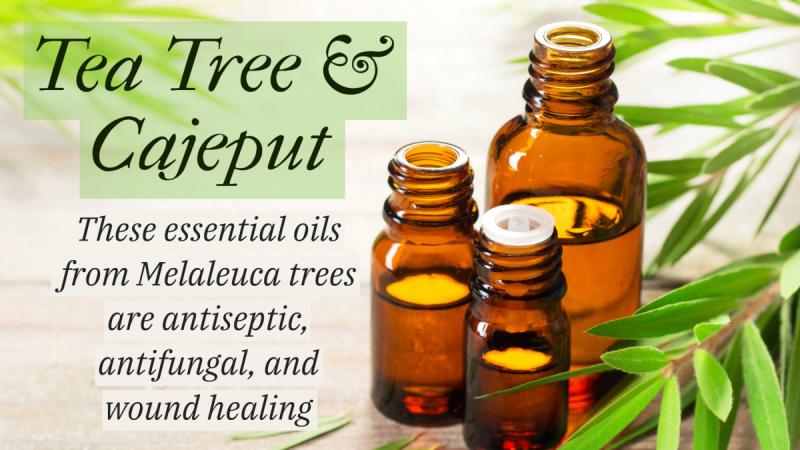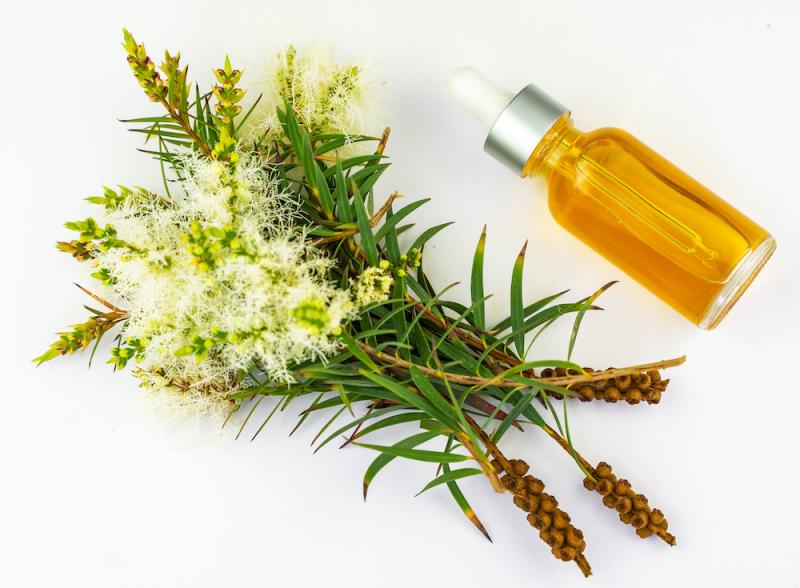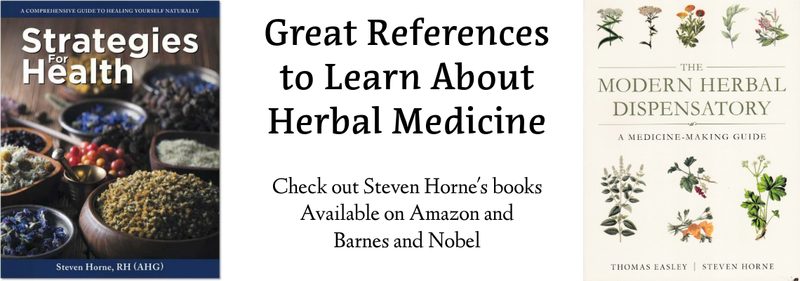
In the late 1980s, I had a neighbor who was a medical doctor. Our kids played together so we had some opportunities to get to know each other. One day he remarked to me that people were better off not putting antiseptics on wounds because the antiseptics killed not only microbes but the body’s own tissues, causing the wound to heal more slowly. He was speaking of substances like iodine and mercurochrome, which was a popular topical antiseptic for minor injuries back then that has since been banned by the FDA.
I replied that there were antiseptics you could apply to wounds that would not only prevent infection but would speed healing. I was speaking of tea tree oil, which I had already been using for many years, although there are plenty of other oils that have these effects. He was surprised and wasn’t even sure that was possible. I don’t know if he ever investigated my claim more deeply, but there’s plenty of evidence that essential oils like tea tree oil can do just that.
About Tea Tree and Cajeput
 Tea trees belong to the Melaleuca genus and there are a number of different species that are used to produce essential oils, which are sold as melaleuca, tea tree, or cajeput oil. The leaves of these trees, which are native to Australia, were traditionally used by aboriginal people to heal cuts, wounds, and skin infections. They also crushed the leaves to inhale the vapors for respiratory congestion and headaches.
Tea trees belong to the Melaleuca genus and there are a number of different species that are used to produce essential oils, which are sold as melaleuca, tea tree, or cajeput oil. The leaves of these trees, which are native to Australia, were traditionally used by aboriginal people to heal cuts, wounds, and skin infections. They also crushed the leaves to inhale the vapors for respiratory congestion and headaches.
Most tea tree oil comes from Melaleuca alternifolia, although other species have been used, and cajeput comes from M. cajeputi. Since they’re closely related both botanically and therapeutically, I’m going to talk about both in this article.
Topical Application
 Kids can get a lot of minor injuries growing up and I routinely applied tea tree oil to burns, cuts, abrasions, and other minor injuries. It’s not analgesic, but it also doesn’t sting like alcohol or some other topical antiseptics do. It’s non-irritating and nontoxic for topical application. Oils from Melaleuca trees are also cicatrizant, which means they help heal wounds without scarring. Many other essential oils have this property and seem to increase the speed at which the injury heals, as well as helping it to heal without forming a scar. I don’t think that’s a quality that is duplicated by any chemical drug.
Kids can get a lot of minor injuries growing up and I routinely applied tea tree oil to burns, cuts, abrasions, and other minor injuries. It’s not analgesic, but it also doesn’t sting like alcohol or some other topical antiseptics do. It’s non-irritating and nontoxic for topical application. Oils from Melaleuca trees are also cicatrizant, which means they help heal wounds without scarring. Many other essential oils have this property and seem to increase the speed at which the injury heals, as well as helping it to heal without forming a scar. I don’t think that’s a quality that is duplicated by any chemical drug.
Besides minor injuries, the oil can be applied topically to help treat acne, warts, ringworm, insect bites, and fungal infections like athlete’s foot and toenail fungus. So besides being antibacterial, I also find the oil to be a very good antifungal agent. It also appears to help stimulate the immune system.
Although you can apply it neat (undiluted) to injuries, for larger skin surfaces (like acne) you should probably dilute it with a carrier oil at a rate of about 1:5 because the skin can become sensitive to it when it is applied multiple times and some people report skin irritation with it (although I haven’t experienced this).
Other Uses for Melaleuca Oils
 Both cajeput and tea tree can be inhaled to ease respiratory congestion. They have a vaporous, penetrating quality also found in eucalyptus and pine, which helps open up congested airways. Of course, they also help the body fight any infection present in the lungs and sinuses. The oils also help “clear the head” when your thinking is cloudy or foggy and you need to wake up your mind to feel more focused and alert.
Both cajeput and tea tree can be inhaled to ease respiratory congestion. They have a vaporous, penetrating quality also found in eucalyptus and pine, which helps open up congested airways. Of course, they also help the body fight any infection present in the lungs and sinuses. The oils also help “clear the head” when your thinking is cloudy or foggy and you need to wake up your mind to feel more focused and alert.
I’ve also used both tea tree and cajeput internally. However, for internal use I prefer cajeput. It’s a little more camphoric and less heating for internal use. Internally, the oils are helpful for fungal infections, such as thrush and candida, and for intestinal parasites or amoebic dysentery.
It’s very important to dilute the oil properly when using it internally and to only use it for short periods of time, no more than two or three weeks. You can add 1-2 drops of oil to a spoonful of olive oil or honey and take this once or twice a day.
For fungal infections, I typically use a formula I got from Carl Robinson when one of my children had thrush. I’ve used it many times since then and found it very effective. It consists of 4 drops of cajeput oil, 3 drops of lavender oil, 2 drops of thyme oil, and one drop of lemon oil. You dilute this in olive oil at a rate of 1:20 for adults and 1:40 for children (that is 1 drop of the essential oil blend mixed with either 20 drops or 40 drops of olive oil). The dose of the diluted mixture is 1 drop for children or 2 drops for adults twice daily for one week. It can also be applied topically.
I always keep some tea tree oil in my first aid kit along with a topical analgesic blend like Tei Fu, Tiger Balm, or White Flower, the former to fight infection and the latter to ease pain. However, be aware that tea tree oil degrades when exposed to light and heat so it needs to be kept in an amber bottle and away from sunlight in a dark, cool place.
Downloads
Steven's Articles
-

-
Barberry and Healthy Personal Boundaries
A thorny shrub for fighting infections and supporting…
December
-

-
The Evidence for Berberine
A yellow alkaloid found in traditional infection-fighting…
-

-
The Sensible Use of Caffeinated Herbs
Kola nuts, guarana, and yerba mate and other herbs…
-

-
The Health Benefits and Problems with Coffee
This popular caffeinated beverage can be beneficial…
October
-

-
Understanding Caffeine & Cellular Adaptation
Preserving the power of caffeine's buzz and the…
September
-

-
Horseradish
A pungent spice for aiding protein metabolism…
-

-
Banaba or Crepe Myrtle
A beautiful tree from Southeast Asia whose leaves…
August
-

-
Monkeyflowers
Flower essences to help see ourselves more clearly…
-

-
Mariposa Lilies
Strengthening the bond between mother and child…
-

-
The Noble Bay Leaf
A common kitchen herb for aiding digestion and…
-

-
Epimedium: Horny Goat Weed
A circulatory stimulant and kidney yang tonic…
July
-

-
The Medicinal and Nutritional Benefits of Apricots
A nutritious fruit and valuable medicinal seed for coughs
-

-
Dogwoods
Asian dogwood is used to stop excessive discharge,…
June
-

-
Neem: The Village Pharmacy
A popular Ayurvedic remedy for dental and immune…
-

-
Spilanthes: The Toothache Plant
A traditional remedy for teeth and gums, as well…

